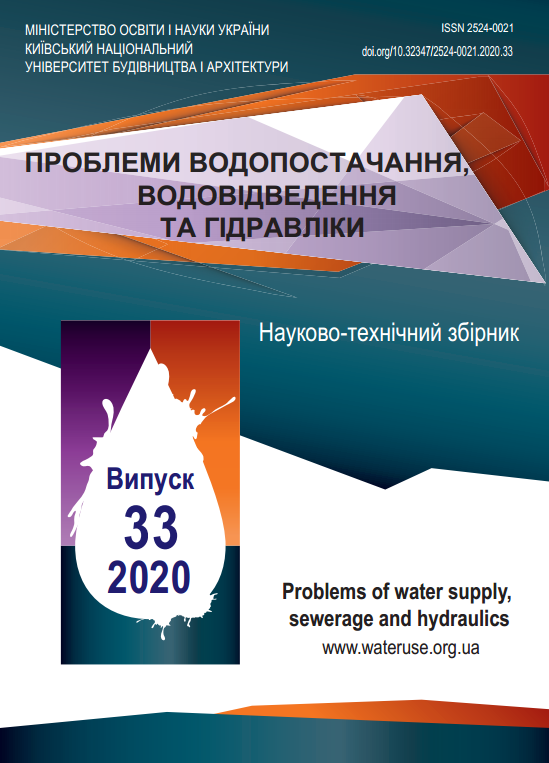Mobile flood protection systems on mountain rivers in dense urban condition
DOI:
https://doi.org/10.32347/2524-0021.2020.33.11-18Ключові слова:
flood protection, mobile flood protection systems, segment walls, mobile tubesАнотація
Significant climate change has been, leading to heavy rainfall and flood flow rate increasing the last twenty years. At the same time, natural factors, such as sediment accumulation and bottom elevations, channel clogging, and anthropogenic factors: intensive floodplain construction leads to floodplain narrowing and increased flood levels. European cities have been increasingly used mobile flood protection systems as one of the elements of flood protection. The peculiarity of the mountain rivers flood in Ukraine is their short duration: 3-5 days and a significant rate of water uplift, which requires a rapid and simple installation of temporary barriers. The aim of the review is to determine the optimal mobile structures for flood protection of urban areas in conditions of intense mountain floods. The existing mobile systems and the experience of their use in the EU countries were analyzed. The cost of mobile systems significantly exceeds the cost of embankment and has no economic benefits if there is enough area for embankment construction. But in dense urban conditions, the use of mobile flood protection systems become an economically viable alternative to permanent protective structures, because they do not require additional permanent space and do not block access to the river. Flood area mapping with precise identification of the protected area should be developed and automated information and measurement system for early forecasting and notification of the relevant authorities about the floods threat should be implemented, because barriers erection is required time of average 1 hour per 100m, excluding delivery time from the storage area. The installation of mobile systems requires the involvement of human resources, which must have periodically train. The equipment must be delivered quickly to the destination, which requires the involvement of transportation equipment and additional storage area for materials. So, the main requirements for mobile flood systems: light weight, simplicity and speed of installation, its reliability, storage areas and periodic training. The systems with a pre-installed foundation of segment-type, flip walls, segment walls with high foundation and mobile tubes were analyzed. The segment walls with pre-installed foundation (underground or in the form of a parapet) satisfy all above-stated requirements in dense urban condition.Посилання
Kanarskyi, Yu. V. (2016). Klimatychni zminy v rehioni ukrainskykh Karpat na pochatku khkhi stolittia ta yikh vplyv na biotychne riznomanittia. Naukovi osnovy zberezhennia biotychnoi riznomanitnosti, 7(14), 15-36. [in Ukrainian].
Korchemliuk M., Prykhodko P., & Arkhypova L. (2016). Vplyv zmin klimatu na vodnyi rezhym hirskoi chastyny baseinu r. Prut. Problemy heomorfolohii i paleoheohrafii Ukrainskykh Karpat i prylehlykh terytorii, 1, 118-128. [in Ukrainian].
Lukianets О., & Obodovskyi I. (2015). Spatial, Temporal and Forecast Evaluation of Rivers’ Streamflow of the Drainage Basin of the Upper Tisa under the Conditions of Climate Change. Environmental Research, Engineering and Management, 71(1), 36-46. doi:10.5755/j01.erem.71.1.10286
Kryžanowski A., Brilly M., Rusjan S., & Schnabl S. (2014). Review Article: Structural flood-protection measures referring to several European case studies. Natural Hazards and Earth System Sciences, 14, 135-142. doi:10.5194/nhess-14-135-2014
Kádár I. (2015). Mobile flood protection walls. Pollack periodica, 10(1), 133-142. doi:10.1556/Pollack.10.2015.1.13
Chen, S., Li, H., Guo, L., Wang, L., & Cao, Y. (2018). Testing the Key Performance of Mobile Flood Protection System. Advances in Civil Engineering, 2018. doi:10.1155/2018/5641385
Malerova L., Pokorny J., Kristlova E., & Wojnarova J. (2017). Using of mobile flood protection on the territory of the Moldova as possible protection of the community. IOP Conf. Series: Earth and Environmental Science, 92, 012039. doi:10.1088/1755-1315/92/1/012039
Massolle С., Lankenau L. & Koppe B. (2018). Emergency Flood Control: Practice-Oriented Test Series for the Use of Sandbag Replacement Systems. Geosciences, 8(12), 482. doi:10.3390/geosciences8120482
Salyuk, M. R., Mel`ny`chuk V. P., & My`ky`ta M. M. (2013). Analiz nespry`yatly`vy`x meteorologichny`x yavy`shh na Zakarpatti. Naukovy`j visny`k Uzhgorods`kogo universy`tetu: Seriya: Geografiya. Zemleustrij. Pry`rodokory`stuvannya, 2, 32-42. [in Ukrainian].
##submission.downloads##
Опубліковано
Як цитувати
Номер
Розділ
Ліцензія
Автори, які публікуються у цьому журналі, погоджуються з наступними умовами:
a) Автори залишають за собою право на авторство своєї роботи та передають журналу право першої публікації цієї роботи, яка через 70 років після смерті останнього співавтора з дати публікації автоматично стає доступною на умовах ліцензії Creative Commons Attribution License, котра дозволяє іншим особам вільно розповсюджувати опубліковану роботу з обов'язковим посиланням на авторів оригінальної роботи та першу публікацію роботи у цьому журналі.
b) Автори мають право укладати самостійні додаткові угоди щодо неексклюзивного розповсюдження роботи у тому вигляді, в якому вона була опублікована цим журналом (наприклад, розміщувати роботу в електронному сховищі установи або публікувати у складі монографії), за умови збереження посилання на першу публікацію роботи у цьому журналі.
c) Політика журналу дозволяє і заохочує розміщення авторами в мережі Інтернет (наприклад, у сховищах установ або на особистих веб-сайтах) рукопису роботи, як до подання цього рукопису до редакції, так і під час його редакційного опрацювання, оскільки це сприяє виникненню продуктивної наукової дискусії та позитивно позначається на оперативності та динаміці цитування опублікованої роботи (див. The Effect of Open Access).


